I just returned from Spain Basque Country. I visited Spain many times, but never got to the Basque Region, on the border with France. I enjoyed award-winning architecture, art, culture, beautiful scenery, and of course, food and cannot recommend it enough!
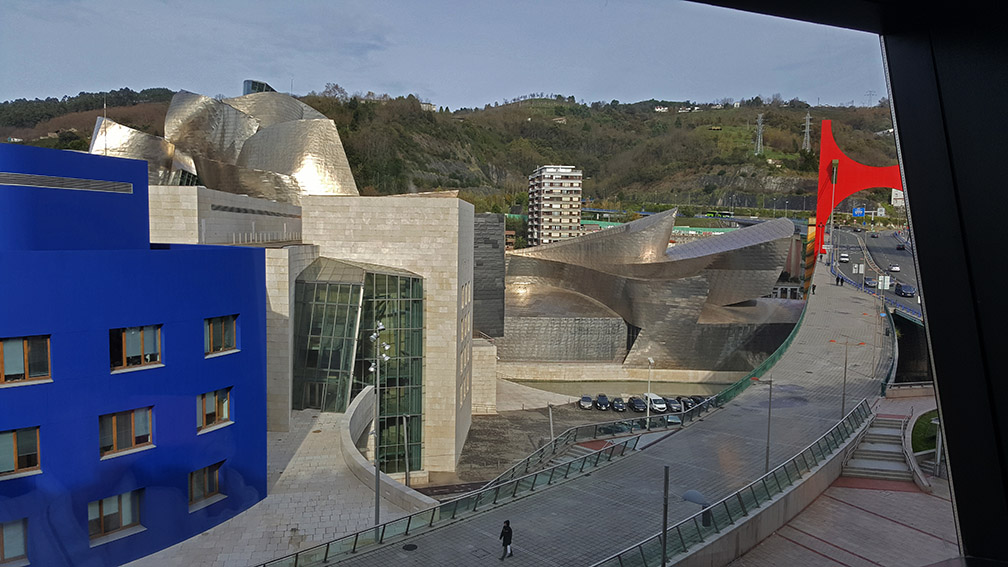
Day 1. I arrived Bilbao from Frankfurt. While most of Spain is Madrid and Barcelona centric, Bilbao is served well by many European airports. It was right time to visit because Bilbao is a winner by 2018 Urbanism awards and was named European City of the year. The architecture impressed me starting at the airport. It was designed by Spanish architect Santiago Calatrava.
Very light and airy due to the steel and glass windows, marble floors (easy to roll suitcase), in a shape of a dove (and nicknamed La Paloma which means Dove in Basque), with two symmetrical wings alike. It looked well tucked into nearby Green mountain scenery.
Bilbao is the capital of Basque Country located in Bay of Biscay, North of Spain.
Bilbao was not always the glamor and chic. It was industrial city and had real downturn as in 90’s but it is amazing what city leaders have done to achieve this transformation.
The main attraction in Bilbao is Guggenheim museum, which put the city on the map of culture of Europe. Most of the events of the city which were explained to me, were specified “Before Guggenheim” and “After Guggenheim”. The Guggenheim was designed by Canadian architect Frank Gehry and it looks like a ship with free form flowing titanium and glass.After it was completed in late 1990s, it is visited annually by 20 million tourists. Guggenheim now is the most known modern building and landmark of the city. It is third Guggenheim museum after New York and Venice.
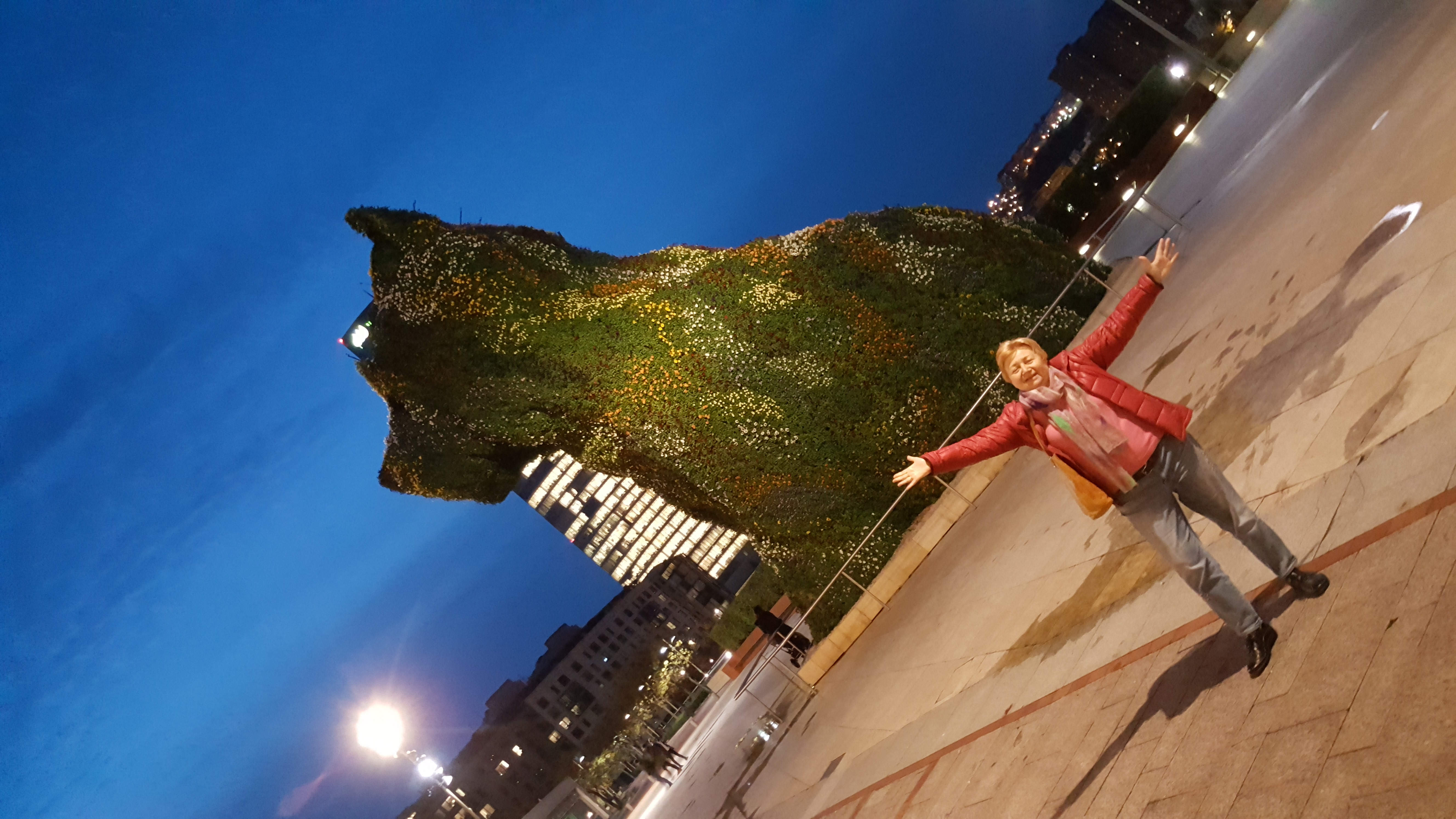
Especially noted, that some of the contemporary sculptures are free, including Puppy by Joseph Koons and Fire fountains (can be seen in the evening).Puppy is 12 meters tall and represents the most adorable things: puppy and flowers. It is self-irrigated, and I was told, every few months Puppy gets “haircut” – replacement flowers which change with season.
I stayed in newly renovated Gran Hotel Domine right across the street from the museum. It is newly renovated, excellent modern design hotel. The hotel itself has quite few art objects. In the center, seen from glass elevator you see an interesting stone tower by famous local artist.
My museum view room faced Puppy, had glass walled bathroom which afforded me a view of Guggenheim even from the bathrooms. There is a privacy blind, however for families and roommates.
I’ve met my guide Elena and we went to explore. Elena told me about the history and transformation of the city. She pointed how Bilbao was reborn. Old industrial complexes along the river were torn down and new projects to improve the overall growth of the city were started. The city is tucked in between river and mountains, so did not have a lot of space to expand. As a result, you have remodeled buildings and they managed somehow keep old Belle Epoque and new modern design.
I saw futuristic Metro entrances with glass domes, very classy for a metro, designed by Sir Norman Foster.
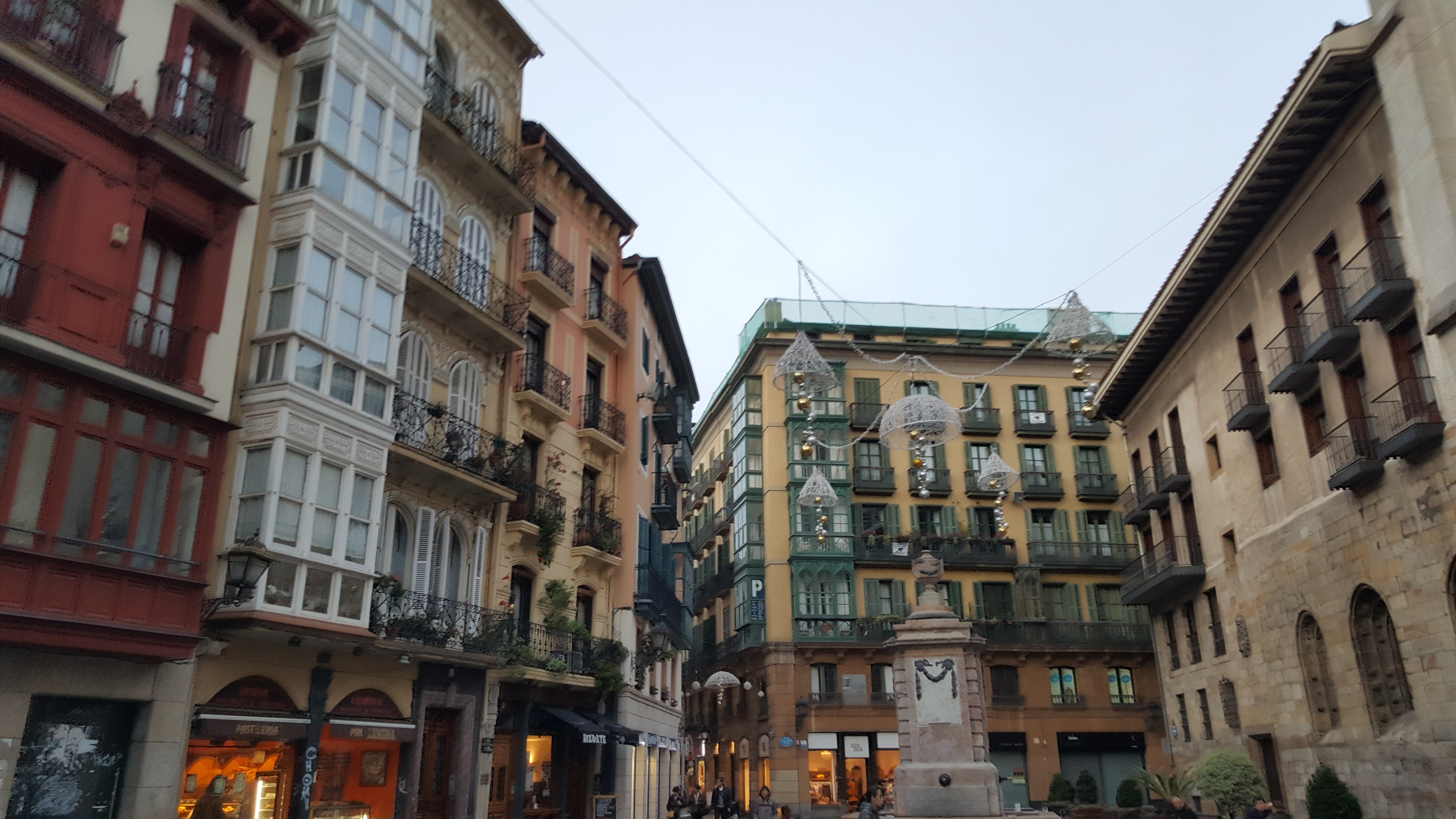
We walked to the old town, the streets changed from wide boulevards with plenty pedestrian space (Gran Via), to narrow alley in old town.
Casa Montero is also called a Gaudi house, built in Gaudi modernist style with intricate round walls and decorations by Gaudi disciples.
In the center of town, I saw a Cathedral in Neo-gothic style built in 19c for pilgrims on the way to Santiago de Compostela.
We went to indoor market to check out produce, fish and eating places. We had a great freshly made churro at the main square and shoestring size fresh French fries. Market had variety of various fall mushrooms, some of them very big. Lots of olives, anchovies and other local fish.
After city walk, we returned to the Guggenheim to see it in the evening lights.
The advantage is that there are fire fountains in the water, erupting every five minutes. There also were few outdoor sculptures like glass tulips which beautifully reflected light. Inside, Kandinsky, Picasso, Kooning, Rothko, Chillida, etc., are just some of the artists; a collection which boasts examples of all the art genres Western culture has produced over the 20th and 21st centuries.
Interesting were the steel sculptures by Richard Serra which are huge steel spirals. When you walk in, you feel claustrophobic and disoriented. If you walk through whole spiral, you will feel dizzy. I liked sculptures of elongated bronze figures by Giacometti.
After museum, we had dinner at Michelin star restaurant Etxanobe, the set menu with paired wine included compliment of the chef – small jar of pumpkin soup, first course Asparagus tempura, followed by smoked grilled anchovies. Anchovies are the specialty of Biscayne Bay where Bilbao is located. Then we had cream of mushroom, Sea Bass with risotto and mussels, and pulled pork dish. Desert was Ascago Russian cake, kind of caramel cake. Everything was delicious.
Day 2. Gernica
I had breakfast at hotel in their lovely terrace on 7th floor enjoying the view of the city. I liked grated tomato and olive oil on my toast like Catalan tomato sandwich.
After breakfast, we left for Gernica. Most people know the city because of Pablo Picasso’s painting with the same name, depicted raid on this city in 1937 which destroyed most of it.
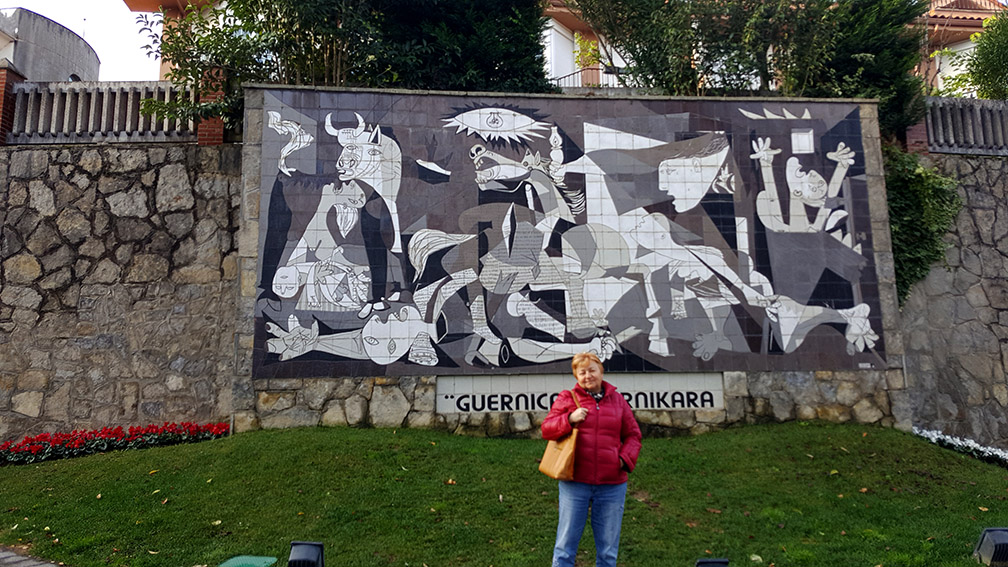
However, Gernica is not important just for the bombing. Throughout the Middle Ages in Europe, it was common for leaders of various communities to come together under a tree to create laws and make agreements. The Guernica Tree is one such tree that was used as a meeting point for the Basque communities and the Lord of Biscay. It was beneath its branches where the Lords of Biscay swore to respect the Biscayan liberties and where they established a set of laws known as “fueros,” that granted the Basques autonomous rule.
Besides Guernica tree there is also nature reserve with beaches and Park of People of Europe with nice sculptures including the one pictured below – the eggshell and a bird.
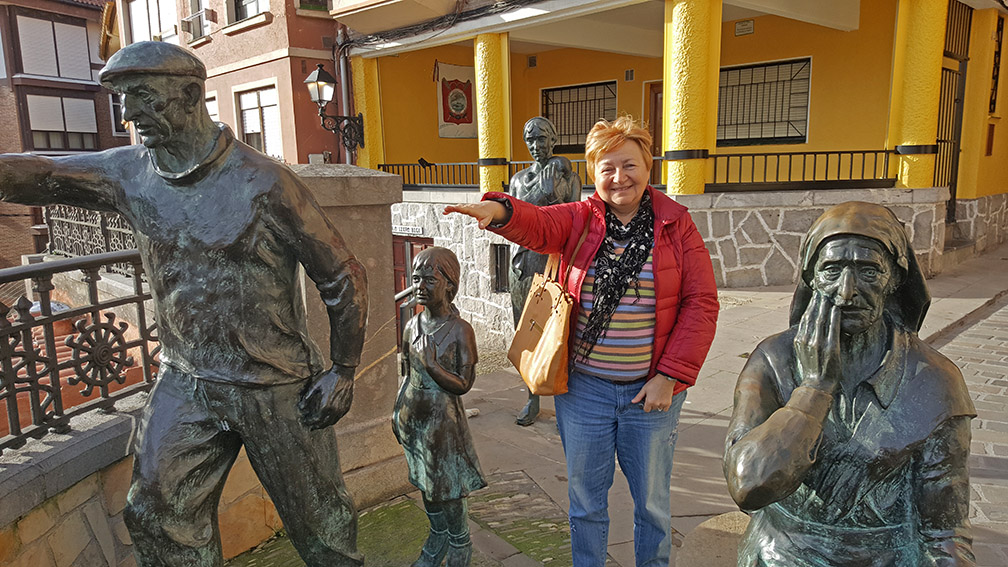
We continued to Bermeo, a picturesque fishing village where we walked from the port to the center.
It had lovely marina and beaches.
There is a monument to the fisherman and their families which called “And then they say fish is expensive”.
Shows fisherman going to the sea, doing their dangerous work and their families waiting for them.
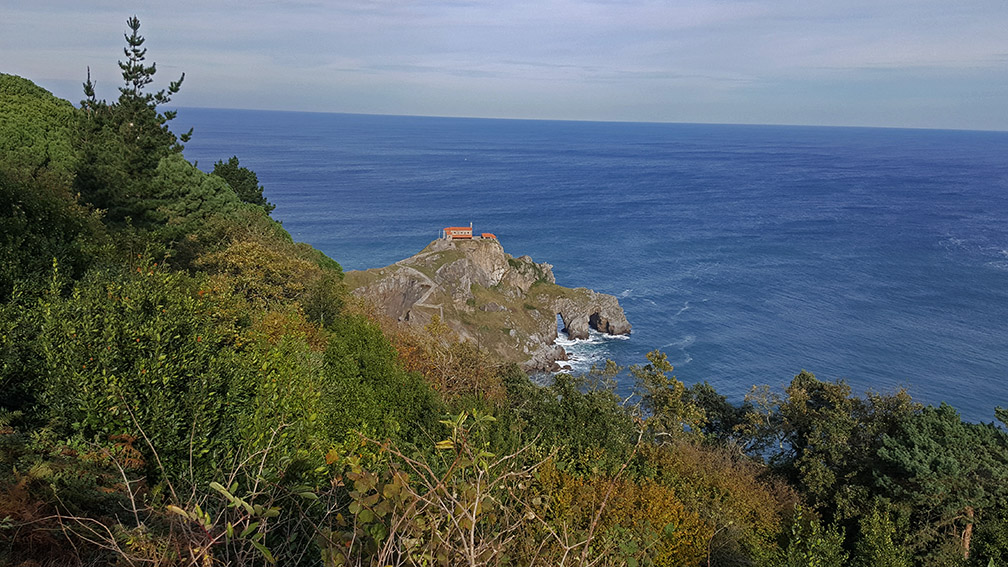
We stopped for photo for a view of little islet of Gastelugatxe, of the shore along Biscay Bay.
The island is cone-shaped and features a tiny church on its highest point that is dedicated to John the Baptist. Although not proven, it has been said that he even set foot on the island. San Juan de Gaztelugatxe is connected to the mainland by a man-made stone bridge.
This location was featured in the Game of Thrones HBO show as the mystical island Dragonstone.
Next stop was Getxo where we saw Viscaya transported bridge which takes cars and people across the river it is UNESCO heritage site. Was built in 1893 by one of Eiffel students. Eiffel only came to inspect it. I recall it was about .5 euro to ride it and ride lasted few minutes.
Here is a video.
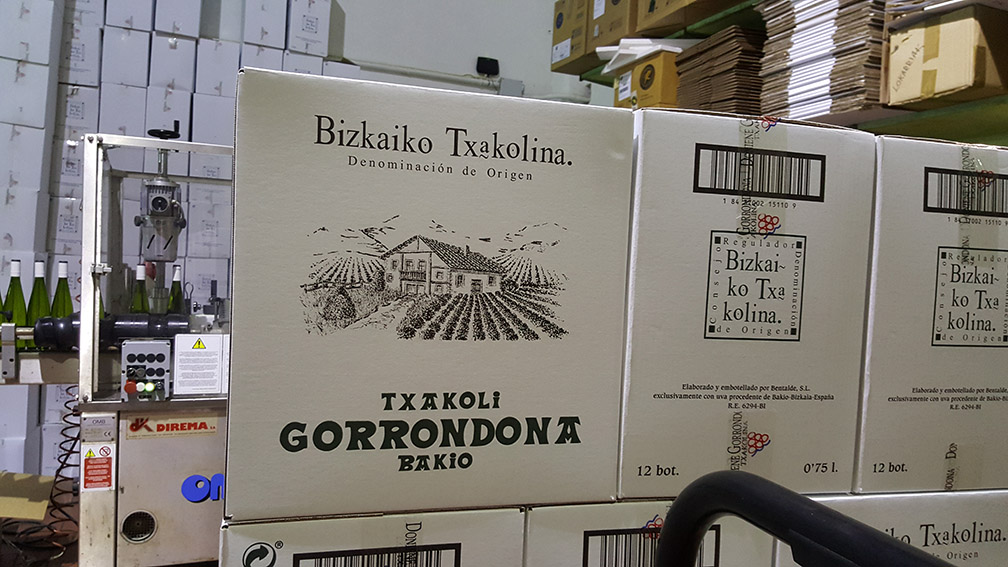
We went to local winery which produces Txakoli wine (pronounce Cha-ko-lee), visited vineyard, talked to the owner and tasted white, light fruity and sparkling wine.
It is an excellent wine for aperitif or seafood.
We returned to Bilbao and had a lunch at the Bistro, Bilbao’s Guggenheim museum. The other restaurant in the museum, Neru has 1 Michelin star and more formal. Bistro provided light fare in informal setting with locally sourced menu.
For salad we had marinated Hearts of Romaine with mashed potatoes and touch of sundried tomato. Next course was fish and seafood soup which was presented with fish and the soup liquid was poured separately on top of it. Next was fish hake, very delicately cooked. After that was served roasted deboned lamb with pumpkin and orange puree. Desert was caramelized French toast and mine was Idiazabal cheesecake. I liked French toast more since cheese had a flavor of sharp cheese, not like cheesecakes from cream cheese we used to in USA.
Day 3 Rioja.
We left for a day trip to Rioja wine country, about 2 hours south of Bilbao.
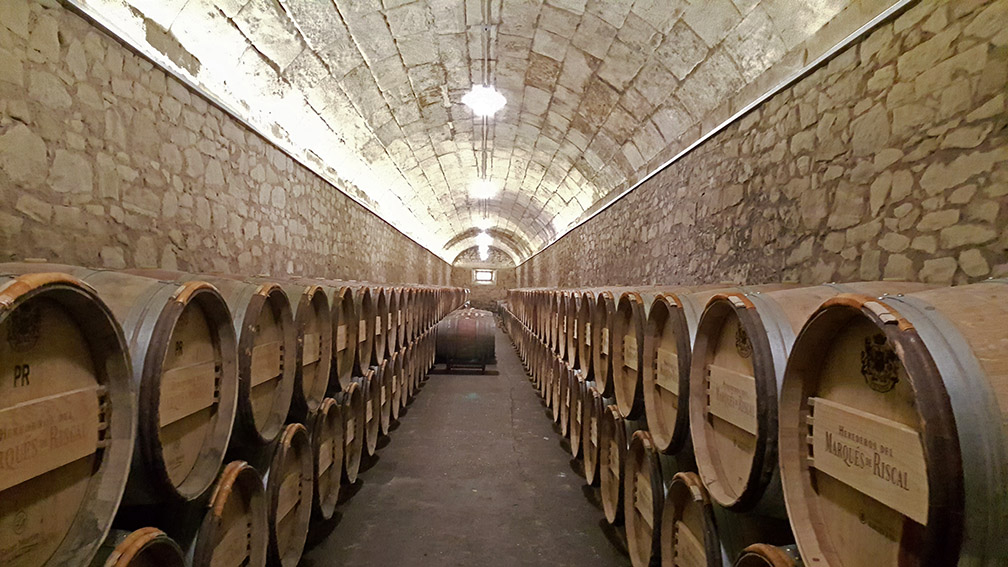
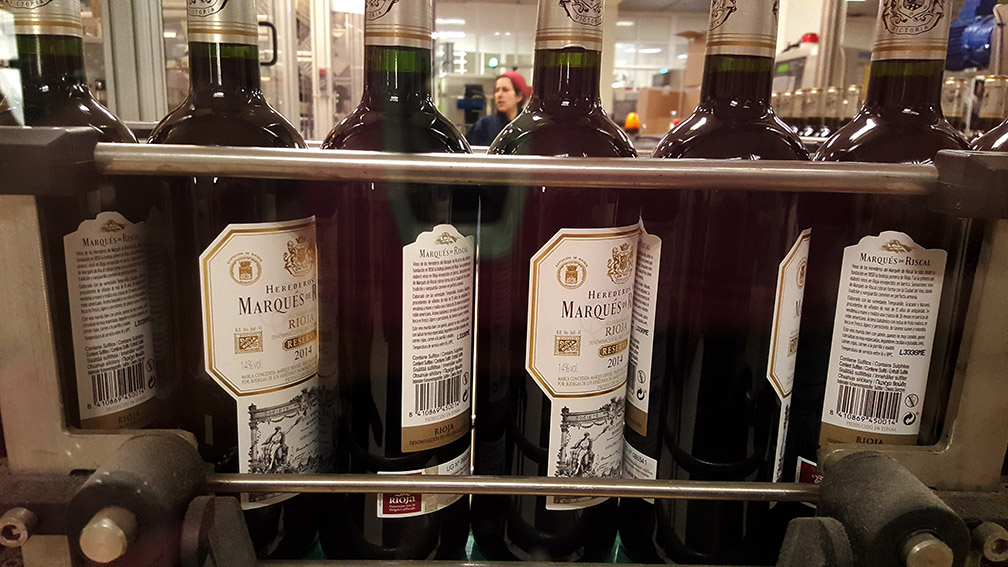
We visited hotel and winery Marques de Riscal. It is the realization of a dream by Don Camilo Hurtado de Amezaga, who was driven by the devastation of the Bordeaux vineyards by the louse phylloxera decease in the 19th century. Don Camilo saw an unrealized potential in the new land which is now Rioja for a quality wine production. He founded the winery in 1858 with getting first vintage in 1862. There were few producers in Rioja during this century. The expanded cellar later once the wine received recognition across Europe. The family’s biggest achievement, however, was to win the Diploma of Honor of the Bordeaux Exhibition in 1895, they were the first non-French wine to do so!
They have continued their innovation-looking approach into the 21th century, building a hotel and spa resort that launched in 2006. Designed by Frank O. Gehry, (who also designed the Guggenheim in Bilbao), its spectacular look of traditional and avant-garde design has drawn visitors from across the globe.

In 2011 the hotel’s restaurant was awarded its first Michelin star. Now it is a part of Starwood Luxury collection. It is a destination winery/hotel and a great stop on the way itinerary from Madrid to Bilbao to truly experience destination: luxury, wine and food.
But for all this company’s impressive architecture and modern equipment and approach, at heart, Marques de Riscal is a family winery, with the only real concern being producing excellent Riojas at a fair price.
After tasting the wine and hotel inspection, we left for nearby beautiful walled town La Guardia. It was founded in 10c as a defense town on the hill for the kingdom of Navarra, this picture-perfect town is surrounded by vineyards on all sides and view of the mountains in the background. We enjoyed the walk through the medieval narrow streets.
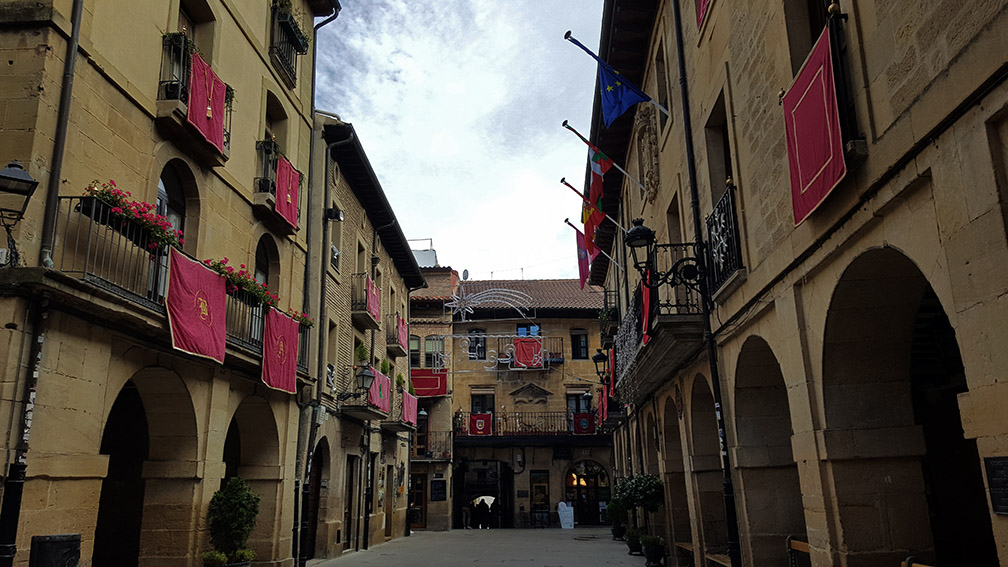
We had a winery tour followed by lunch in a modern winery Bai Gori. It was quite different from Marques de Riscal.
The tasting menu was matched with their wines. Starters were Spinach, Rocket and Red Swiss Chard sprouts with fried artichoke hearts and pine nuts. Seasonal mushrooms in cheese cream were delicious. First course was Rioja bean casserole and tasted Chorizo sausage there. Second course followed by slow cooked Iberian pork jowl in Bai Gori Maceration Carbonica. Desert was Black chocolate
cake on citrus fruits custard and solid Capuccino.
It took about 2 hours to get back to Bilbao.
Day 4. I checked out of hotel, and we went to San Sebastian.
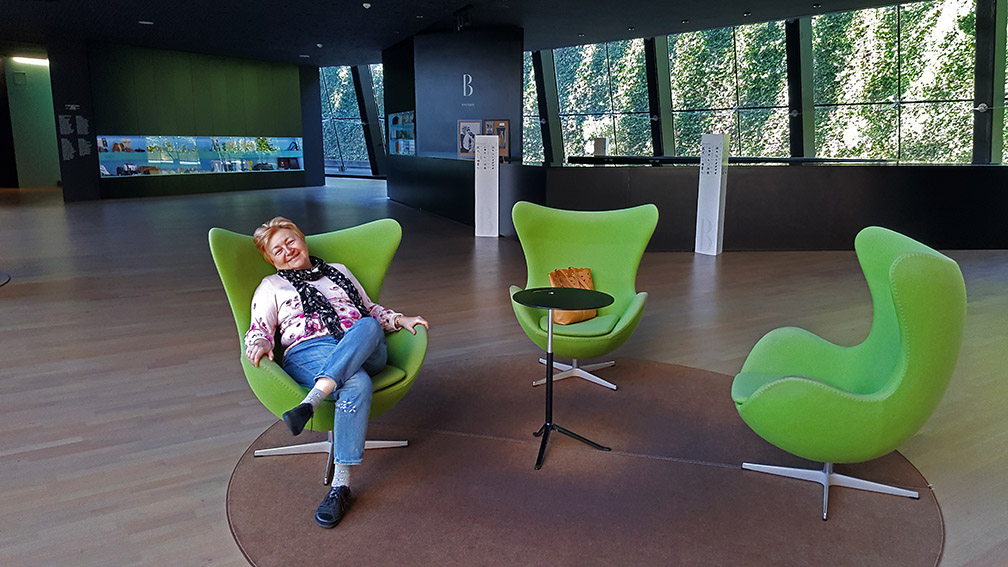
On the way we stopped at Cristobal Balenciaga museum in Getaria which exhibited life and work of fashion designer Cristóbal Balenciaga, who was born in this town.
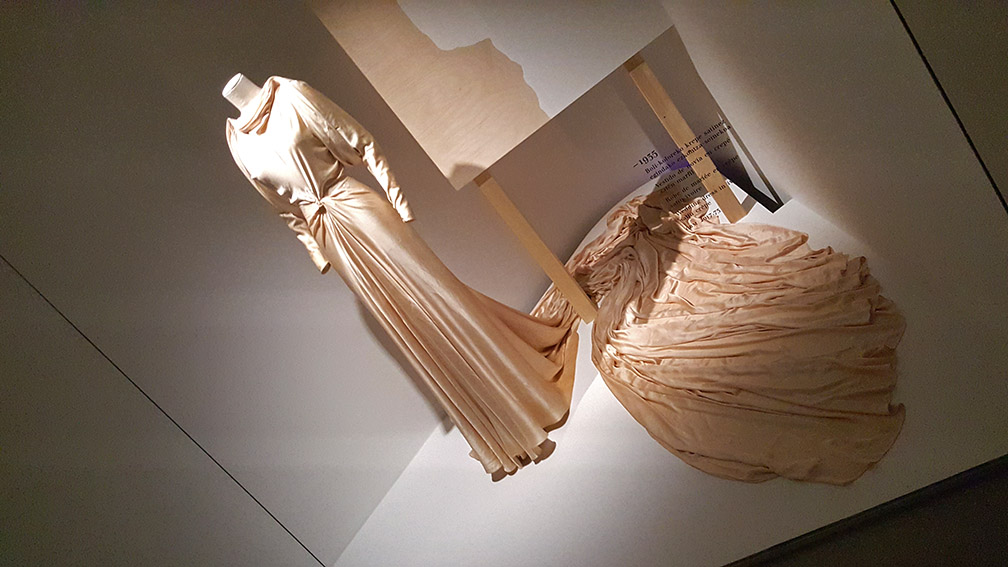
It was a very interesting museum and I liked the fact that he produced and respected couture for women all sizes.
San Sebastian, or also called Donostia, is a city that is perched above the sea. It is a famous seaside resort.
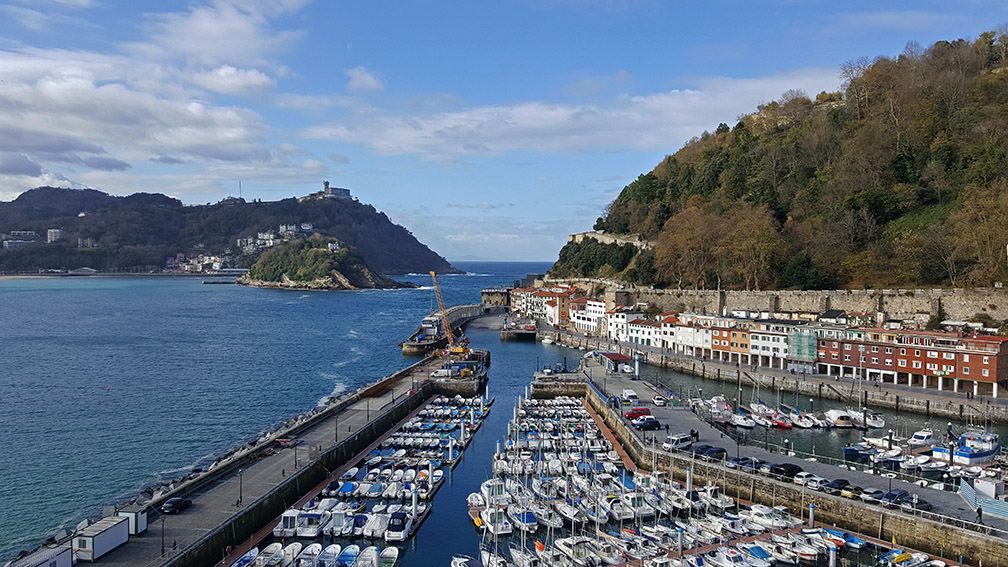
The town is blessed with 3 sand beaches, right in the center and wonderful promenade about 6 km, where you can also enjoy art sculptures. It has beautiful Belle Epoque buildings and historic Old Sea Port.
It is also is famous with gastronomy. There are renowned restaurants, including 3 Michelin stars, some specific male only gastronomic society, and the most popular and my favorites, Pintxo (pronounced Pinchos) bars.
In summer, there is the International Film Festival, plus many other cultural events which keeps visitors and locals busy.
In 19C, the queen Marina Christina was recommended to come to San Sebastian to cure her skin problems and she left to the city the Miramar Palace and park. Since then, the luxury hotels, casinos and theatres flourished.
We walked along the six-kilometer promenade along the Paseo Nuevo that skirts around Mount Urgull, with sea view always alongside, and with some of the sculptures by Basque sculptors. Each beach has their own character, one for the surfing, another for canoeing or paddle boarding and another for swimming or just enjoying it. You can also go to offshore island Santa Clara by boat. For the best view, we drove up the hill where behind Mercure hotel, at its terrace opened 360 panorama of the city and the sea. It is also possible to get to this top point by funicular.
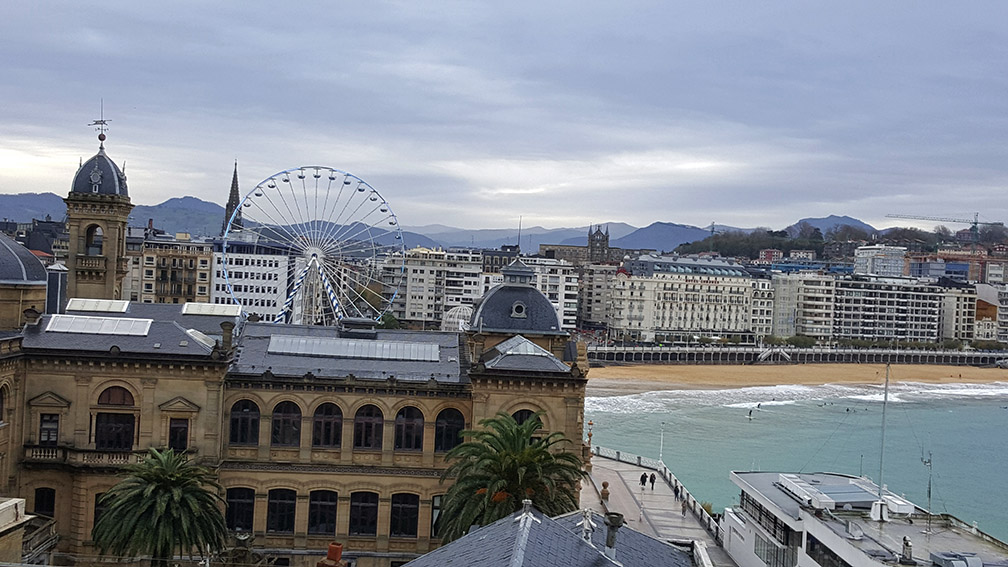
Like all medieval cities, San Sebastian was built on the hill for defense purposes around 12C. For centuries, the city was busy with maritime trade being combined with traditional whaling and cod fishing. It was occupied few years by nearby France, then undergone urban development in 19c, and in the beginning of 20c experienced the “Belle Époque”, becoming the preferred tourist destination of the European upper classes. During the 1st World War, moneyed Europeans took refuge from the conflict here. Much of the French influence that is visible on the streets of the city is due to these visitors. There was depression after Spain Civil war, but in the second half of the 20c, San Sebastian came out of the depression, and became the stylish combination of tradition and modernity that we know today.
We went to the old town, which is a heart of the city. There are cities oldest buildings, lots of restaurants, pintxos bars. We saw the market, cities former bullring area which still has historic buildings with numbered balconies to watch bullfights.
We ate in few pintxos bars and enjoyed these Basque creations. No wonder, San Sebastian was awarded as the world’s best Culinary Destination in 2017.
Pintxos, known as miniature haute cuisine, they are like Spanish tapas, but Basque style. There is a wide variety available, ranging from the simple traditional baked mushroom to the most novel creations by aspiring chefs. Usually they are served with a small glass of wine of beer.
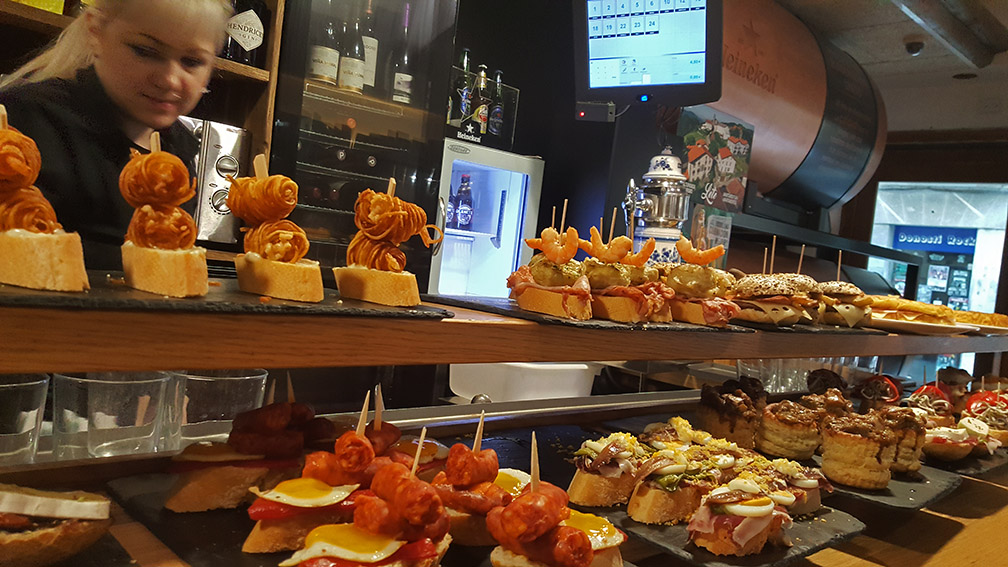
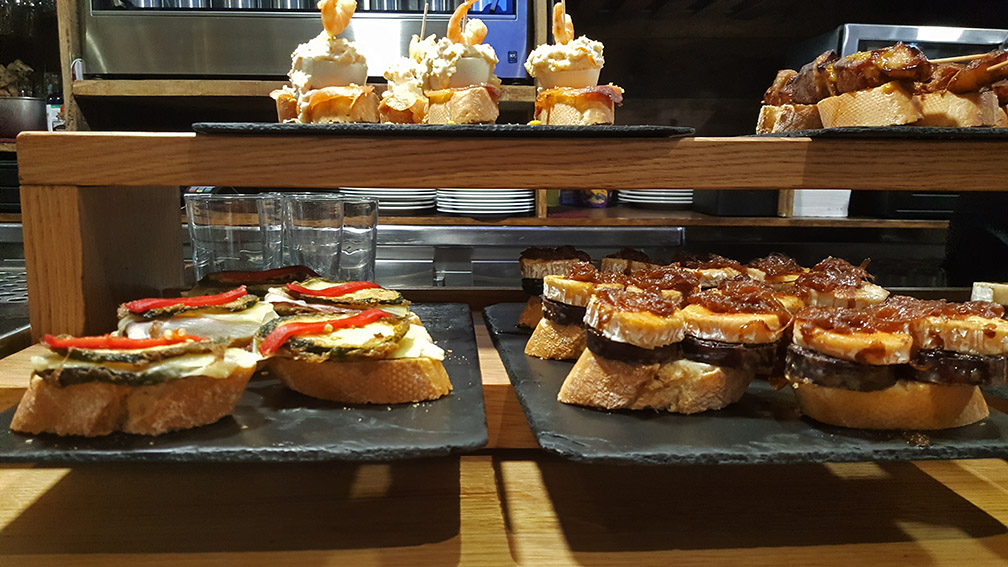
We enjoyed some interesting combination of Pintxos, starting with curled fried potatoes, shrimps, spider crab, and continued to the next place where we got amazing seared foie gras on baguette type bread. Some of the pintxos featured combination of local Iberian cured ham and local cheeses. Everything was delicious.
We finished our pintxos crawl at the local bakery with some Basque deserts.
My hotel was a great location right in the middle of old port, sunny, light windows, hardwood floors, and they even had Japanese toilets! I highly recommend Hotel LaSala Plaza. It is newly opened 4* hotel, but with comfort and services, at has 5* quality. Other hotels I’ve booked clients in San Sebastian are: Londres 4* across the bay and Marina Cristina 5*. But LaSala Plaza won over location.
For dinner time, I walked out to satisfy my newly found addiction to Pintxos 😊.
Next day I went back to Bilbao and flew back to my next destination.
That concluded my trip to Basque Country.
I highly recommend it for Spain based travelers who will see a bit different part of the country, with award winning innovating architecture, culture, beautiful scenery, and gastronomy!
I would like to express special thanks to NIS company, Bilbao tourist board and most of all, my wonderful guide Elena for helping me organizing my stay!